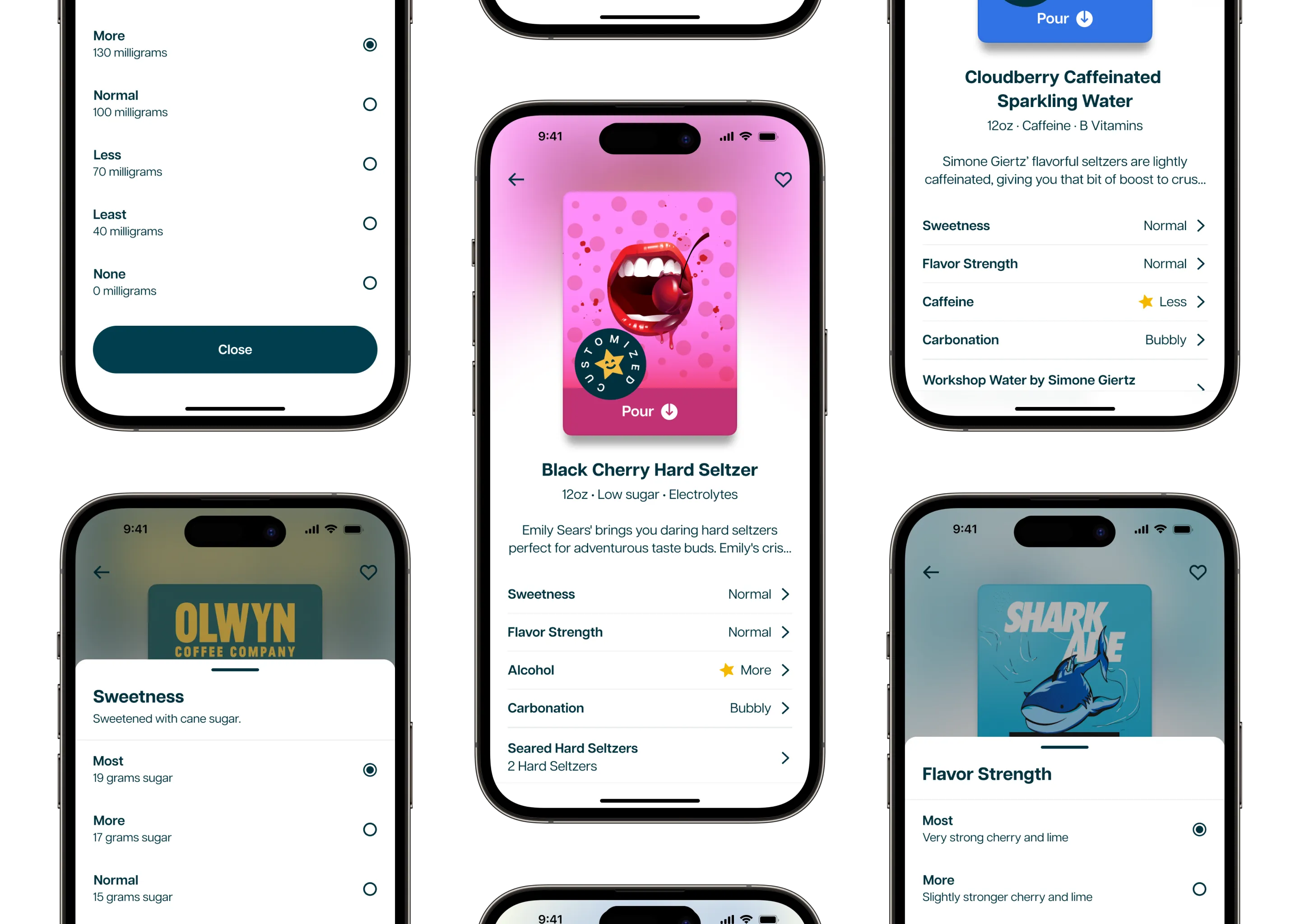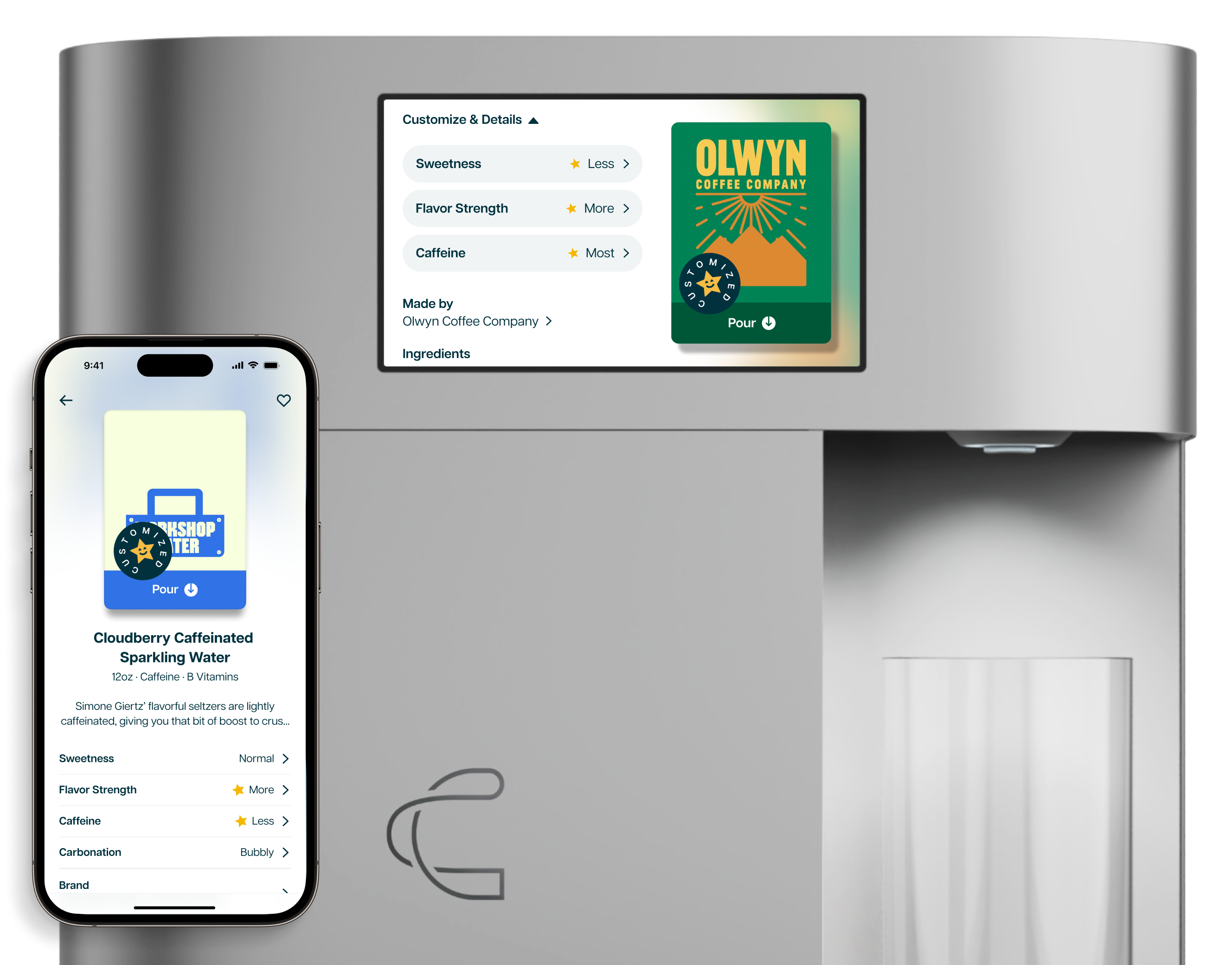Overview
Background
Problem
Today, user’s can’t customize canned or bottled beverages except by adding these to other canned and bottled beverages (e.g. mixing Gin and Tonic and adding a lime squeeze).
Opportunity
A beverage printer allows users to adjust the taste and effects of the beverage to suit their needs and helps differentiate the product from the ready-to-drink alternatives.

Solution
Role
I collaborated with our Head of Design on creating the pour experience system, and the motion and sound patterns for the countdown sequence.
Team
I collaborated with Head of Product, Product Manager, Head of Software, Head of Firmware for product definition and feasibility and presented final work to 2 in-house software engineers and an engineering team located in India.
Process
Empathy Interviews
I reviewed empathy interviews where customers ranked Customization as the 2nd most important value of the device. I then reviewed early customization concepts to understand what had been explored and what was learned.
Flavor & Size Whiteboarding
For drinks with multiple flavors, we decided users could only customize how strong the flavors were overall, not allowing them to individually control flavor levels. For sizing, we iterated on there only being full, half, and taster size.
Usability Testing
I lead a usability study with 10 pre-order customers that resulted in the big-text 5-point scale being preferred by most users over the slider alternative approach.
Motion Design
We used a star to communicate the settings that were changed and when a beverage was customized. The animated sticker helps gamify the experience, rewarding the user with a delightful star for customizing their beverage.



